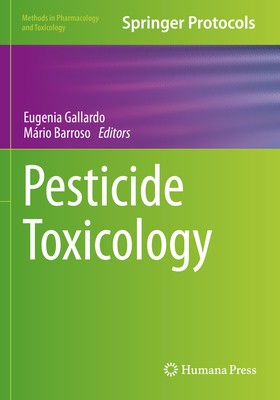
- We will send in 10–14 business days.
- Publisher: Humana
- ISBN-10: 1071619306
- ISBN-13: 9781071619308
- Format: 17.8 x 25.4 x 1.1 cm, softcover
- Language: English
- SAVE -10% with code: EXTRA
Pesticide Toxicology (e-book) (used book) | bookbook.eu
Reviews
Description
1- Overview.
2- Sample preparation approaches and methods to detected and quantify different classes of compounds, as well as approaches for in vivo and in vitro toxicity evaluation.
The classes of pesticides will be as follows.
-Insecticides, such as organochlorines, organophosphates and carbamates. This category also includes insect repellents such as citronella (of natural origin) and diethyltoluamide (DEET), and others.
-Herbicides or weed killers (e.g. paraquat, diquat and glyphosate, and others).
-Fungicides (when applied to wood, these are called wood preservatives).
-Rodenticides.
-Fumigants, meaning those compounds that exist either as a gas or a vapor at room temperature and may be used as insecticides, fungicides or rodenticides, especially in closed storage places. They are extremely harmful due to their physical properties, rapid environmental dissemination and human or animal absorption (examples include aluminum phosphate, cyanide and methyl bromide).-Other pesticides, including algaecides, miticides and acaricides.
EXTRA 10 % discount with code: EXTRA
The promotion ends in 16d.23:31:56
The discount code is valid when purchasing from 10 €. Discounts do not stack.
- Publisher: Humana
- ISBN-10: 1071619306
- ISBN-13: 9781071619308
- Format: 17.8 x 25.4 x 1.1 cm, softcover
- Language: English English
1- Overview.
2- Sample preparation approaches and methods to detected and quantify different classes of compounds, as well as approaches for in vivo and in vitro toxicity evaluation.
The classes of pesticides will be as follows.
-Insecticides, such as organochlorines, organophosphates and carbamates. This category also includes insect repellents such as citronella (of natural origin) and diethyltoluamide (DEET), and others.
-Herbicides or weed killers (e.g. paraquat, diquat and glyphosate, and others).
-Fungicides (when applied to wood, these are called wood preservatives).
-Rodenticides.
-Fumigants, meaning those compounds that exist either as a gas or a vapor at room temperature and may be used as insecticides, fungicides or rodenticides, especially in closed storage places. They are extremely harmful due to their physical properties, rapid environmental dissemination and human or animal absorption (examples include aluminum phosphate, cyanide and methyl bromide).-Other pesticides, including algaecides, miticides and acaricides.


Reviews